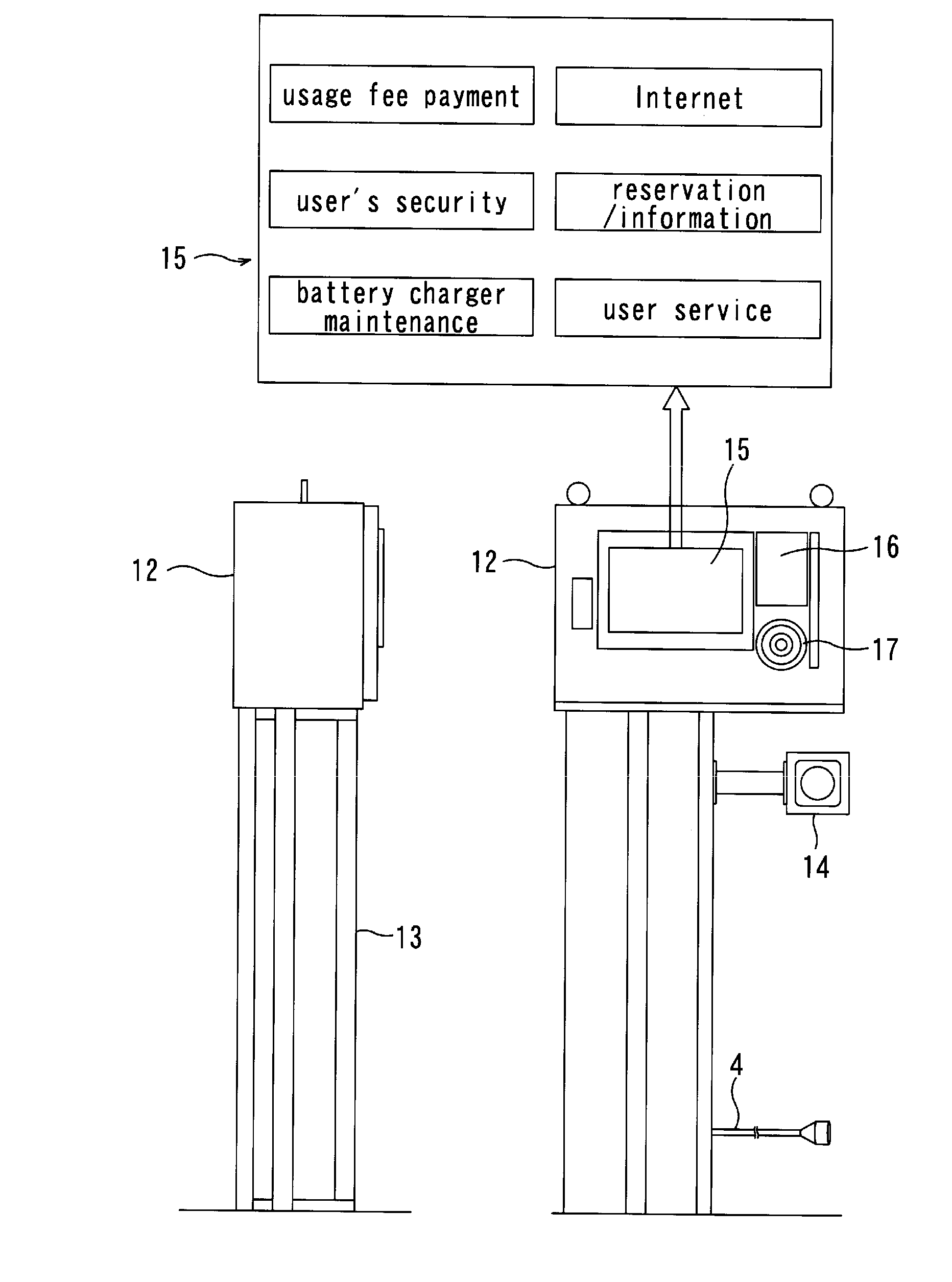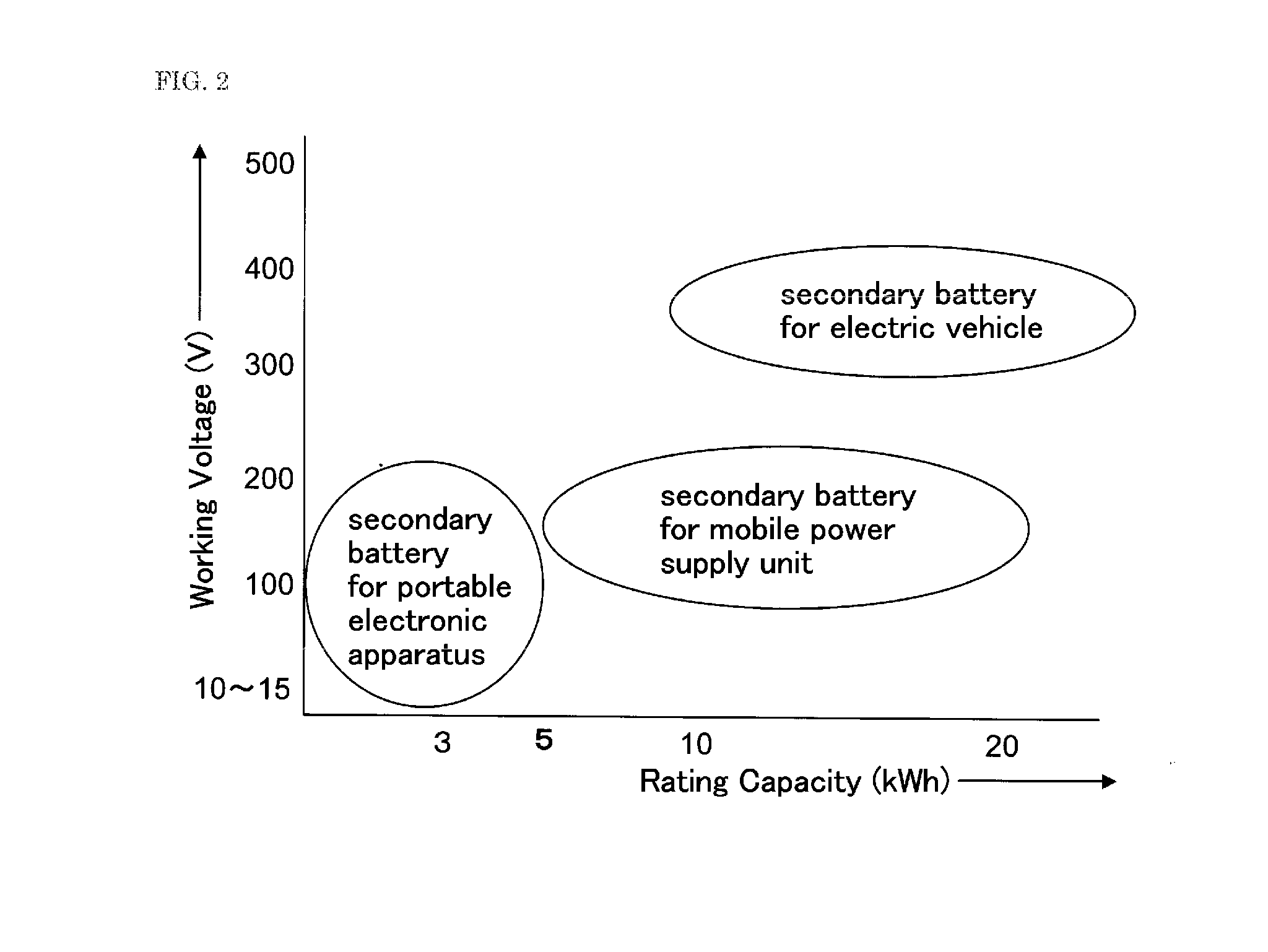Battery charger
a battery charger and battery technology, applied in the field of battery chargers, can solve the problems of relatively long charging time and environmental pollution, and achieve the effects of reducing charging time and installation cost, improving infrastructure for charging secondary batteries, and effectively improving charging efficiency
- Summary
- Abstract
- Description
- Claims
- Application Information
AI Technical Summary
Benefits of technology
Problems solved by technology
Method used
Image
Examples
first embodiment
[0026]FIG. 1 is a block diagram showing an operation of a battery charger according to a first embodiment of the present invention, and FIG. 2 is a chart showing an example of a secondary battery capable of using a battery charger of the present invention.
[0027]A plurality of secondary batteries (a) to (n) are connected to the battery charger through respective ones of a plurality of connection sections (1) to (n). Each of the secondary batteries (a) to (n) is also connected to a control section 21 through communication means 19, to allow secondary-battery information held by a CPU mounted in each of the secondary batteries (a) to (n), such as a battery voltage (V), a battery temperature (° C.) and an allowable input electric power value (W), to be transmitted to the control section 21.
[0028]For example, the secondary battery includes: a secondary battery for an electric vehicle, which has an operating voltage of about 350 V and a rating capacity of about 10 to 25 KWh; a secondary b...
second embodiment
[0036]FIG. 3 is an overall view schematically showing an electric vehicle battery charger according to a second embodiment of the present invention.
[0037]The electric vehicle battery charger (hereinafter referred to simply as “battery charger”) comprises a DC power supply section 1 installed on an upper portion of an installation column 2 provided in a site to extend vertically upwardly from the ground, and a plurality of battery-charge operating devices 3 each installed on the ground. Each of the battery-charge operating devices 3 includes a charging feed cable 4 adapted to be connected to a secondary battery of an electric vehicle to charge the secondary battery. The DC power supply section 1 is adapted to be supplied with electric power from a transformer 6 on a utility-line pole 5 or an underground transformer (not shown) via a feed cable 7, such as an aerial service line or an underground cable line, or to be supplied with electric power from a storage power supply facility, su...
PUM
| Property | Measurement | Unit |
|---|---|---|
| total weight | aaaaa | aaaaa |
| operating voltage | aaaaa | aaaaa |
| operating voltage | aaaaa | aaaaa |
Abstract
Description
Claims
Application Information
 Login to View More
Login to View More - R&D
- Intellectual Property
- Life Sciences
- Materials
- Tech Scout
- Unparalleled Data Quality
- Higher Quality Content
- 60% Fewer Hallucinations
Browse by: Latest US Patents, China's latest patents, Technical Efficacy Thesaurus, Application Domain, Technology Topic, Popular Technical Reports.
© 2025 PatSnap. All rights reserved.Legal|Privacy policy|Modern Slavery Act Transparency Statement|Sitemap|About US| Contact US: help@patsnap.com



